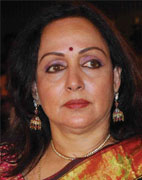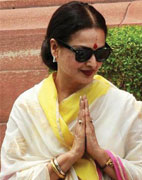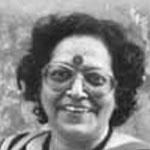The debate on the participation of women in the political process beginning from popular grassroots movements has raised several questions about awareness, impact, leadership, priorities, and so on. It has also led to many analyses on the nature of a political struggle, on mechanisms of mobilisation, strategies and perspectives on micro issues in relation to larger political processes, and ideological dimensions.

Annie Besant, the pioneer
Indian women have been contesting elections from the pre-Independence era. Annie Besant, who accelerated the process of women’s association in 1914 with her entry into Indian politics, was the first woman to be elected as President of the Indian National Congress. Sarojini Naidu too became active in the Indian national movement. In the 1930s, Jawaharlal Nehru made Uttar Pradesh a showcase province for women’s active participation in politics. The Legislative Council and the Legislative Assembly had 16 women members. The most prominent among them were Begum Aizaz Rasul, the deputy speaker of the Legislative Council, and Vijayalakshmi Pandit, who held a cabinet post. But one must note that both these women came from highly politicised, elite families, who had no first-hand knowledge of the political situation and were not in touch with the masses. After the first general elections in 1937, almost every province had a sprinkling of women legislators.
 The underbelly of glamorous parliamentarians was exposed when the media on January 30 reported that the Maharashtra government has given a 2000 sq m plot in Andheri’s Ambivli area to the Natyavihar Kala Kendra, a trust run by the actor-dancer (and BJP MP) Hema Malini, to build a dance school, for just Rs.70,000; the market price for a similar plot in the area is around Rs. 50 crore. On February 2, the media dropped another bombshell reporting that she has been accused of destroying mangroves on a plot allotted to her in the 1990s.
The underbelly of glamorous parliamentarians was exposed when the media on January 30 reported that the Maharashtra government has given a 2000 sq m plot in Andheri’s Ambivli area to the Natyavihar Kala Kendra, a trust run by the actor-dancer (and BJP MP) Hema Malini, to build a dance school, for just Rs.70,000; the market price for a similar plot in the area is around Rs. 50 crore. On February 2, the media dropped another bombshell reporting that she has been accused of destroying mangroves on a plot allotted to her in the 1990s.
Quoting an RTI reply provided by the Mumbai Suburban District Collectorate, activist Anil Galgali on Tuesday said the actress was allotted a plot measuring 1,741.89 square metres in Versova village and possession was granted on April 4, 1997. “She had even made a payment of Rs.10 lakh, showed a bank balance of Rs.22.5 lakh in the accounts of Samta Sahkari Bank Ltd. and given a project cost estimate of Rs.3.7 crore,” Galgali said. However, a year after the allotment, the collectorate slapped a show-cause notice to Hema Malini, asking why the allotment should not be cancelled for violating Coastal Regulatory Zone (CRZ) norms, he said.
Hema Malini sought to make a clean breast of the issue by denying allegations of any ‘land-grabbing’ and claimed that all rules and regulations were duly followed “I ran from pillar to post for this. It’s not been easy. The government has given it to me, I have not gone and grabbed it,” she countered. Following Galgali’s RTI revelations last week, opposition parties including the Congress and the Nationalist Congress Party demanded a probe into the land allotment, as well as its cancellation.
Every election from 1967 to 1984 in the post-Independence era was dominated by the towering personality of Indira Gandhi. Till 1984, among the 28 women members of the Lok Sabha, two-thirds came from well-known political families and had no independent base of their own. Now, one finds that the family connection has percolated down to regional politics also in quite a big way. Not all of them are elite or Western educated, but the filial connection is too obvious to be brushed aside.

A relatively recent addition is the introduction of celebrities from the film, sports and cultural worlds into Parliament. They already have fame, popularity and money. So why do they fight the elections? It gives them a sense of power their work fields do not permit indefinitely. It offers them a dream to pursue, the dream of participating in the developmental growth of the nation at first hand and to test their charisma among their millions of fans across the country.
The star presence
Hema Malini, contesting for a Lok Sabha seat for the first time on a BJP ticket from Mathura, moved around in a white Audi with an orange umbrella and a lotus in her hand! Yet, in a recent interview, she said her complexion had completely changed because of the rallies. Do these people have the faintest idea about ‘development’ for the masses? Has Hema Malini returned to Mathura to take care of its “bumpy roads” that have given her “back pain”? Hema Malini defeated the Mathura incumbent Jayant Chaudhary (JLD) by 3,30,743 votes, and was elected to the Lok Sabha.
Actress Rekha, nominated to the Rajya Sabha, records a below-average attendance of 5 percent, which other MPs objected to. She was sworn in as an honourable member of the Upper House in 2012. Her highest attendance at the winter session was a mere 10 percent, and she did not release any statement in her defence.


Maneka Sanjay Gandhi is the Union Minister for Women and Child Development. But she continues to focus on her role as a leading environmentalist, animal activist and a crusader for vegetarianism. She entered active politics in 1984. Since then she has won parliamentary elections six times starting with the Janata Dal, and has served as minister in four governments. However, she is often criticised for her explosive comments on important issues. Recently, responding to the Supreme Court’s observation on the need for harsher punishment for child rapists, she ruled out chemical castration as a form of punishment, calling the step “regressive” and a form of “revenge”, rather than punishment with a view to reform the offender. She was also pulled up for her proposal to record the sex of the foetus and monitor pregnancies, by several civil society groups opposed to the idea, who felt this would lead to a terribly negative impact on the girl child in the country.
To the world outside, women in India might appear to have total freedom and opportunity to participate in nation-building activities, politically speaking. But is this a true picture? For every Mrinal Gore, Maneka Gandhi, Sushma Swaraj and Smriti Irani, there are thousands of faceless, anonymous women with political aspirations, who are losers in the political race even before they have arrived on the political landscape. The road to political success for women right across the world, one must admit, with their merits and demerits, is paved with thorns.
According to Anuradha Chadha’s Political Participation of Women: A Case Study in India, (OIDA International Journal of Sustainable Development 2014), “Today, there is considerable increase in the percentage of women as voters. The participation of women as voters is almost equal to men. But the political participation (as a whole) of the women is not equal to men. They are still not able to get a share equivalent to men in organisations that require decision making. Still, politics is dominated by men at every level of participation, and women have not been regarded as a significant part of the political arena.”

 [/column]
[/column]